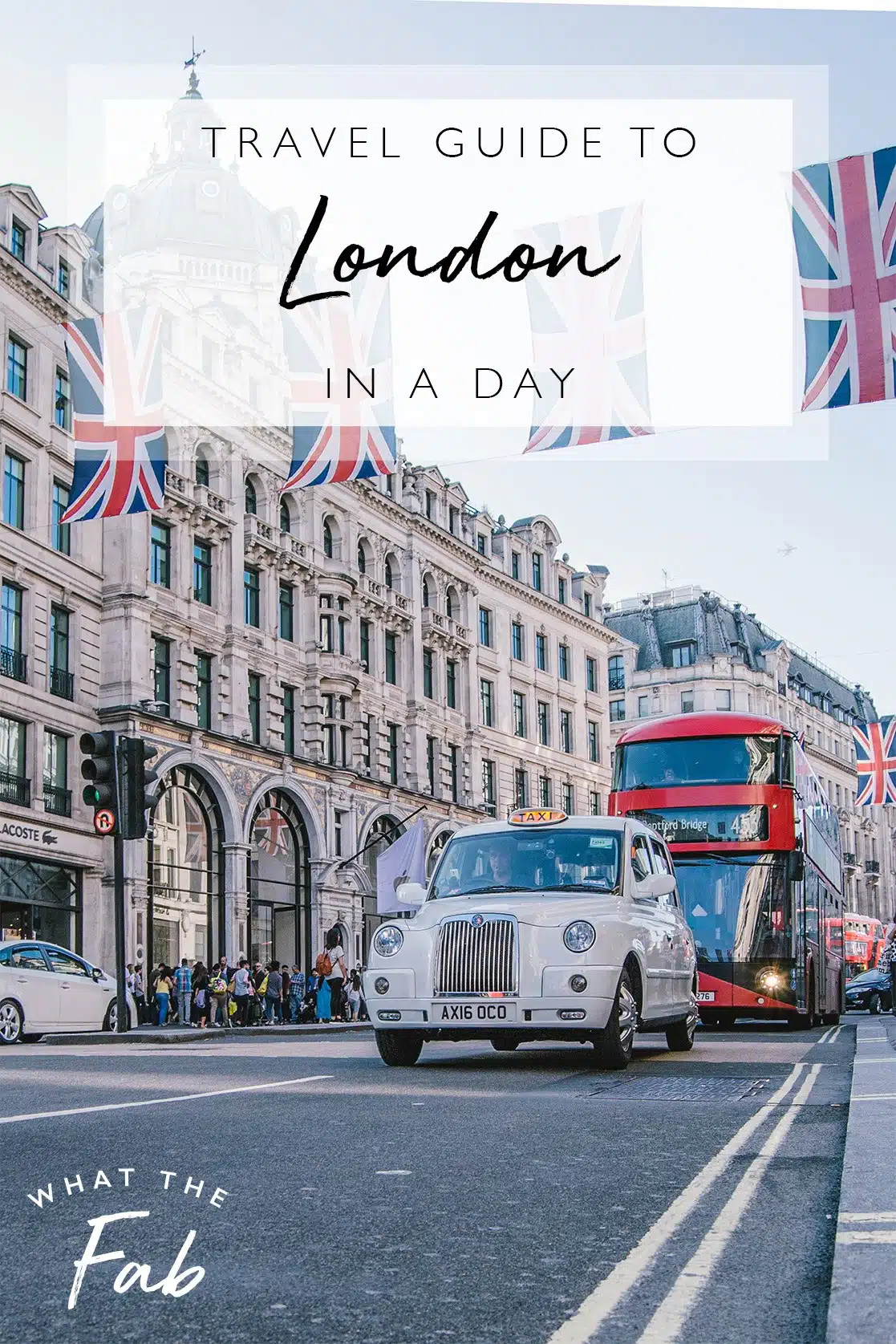
London is a truly great city—a global hub of just about everything you could ever want or need.
It’s filled with awesome history and amazing architecture, mystifying museums, and gorgeous galleries. Its iconic sites are endless—from famous toy stores and clock towers to black cabs, red buses, and the London Underground, you’ll never be too far from a beautiful photo op.
If you’ve only got a day, London can seem overwhelming. Think about it; how could you possibly see everything in London in a day?
I mean honestly, you can’t. But don’t worry!
I’ve compiled a list of everything you can fit into a one day London itinerary to help you out. I think it’s possible to hit up all of the below sites in a day. A long day, sure, but it will be totally worth it!
And if you can’t visit them all, don’t worry—just pick your favorites and tailor-make your London trip to fit you and your travel vibe.
So, what are you waiting for? Grab yourself Go City’s London pass here, which will save you $$ on London’s top attractions, hop on the Tube, or rent one of the public bikes and head out to explore—London awaits!
London in a Day
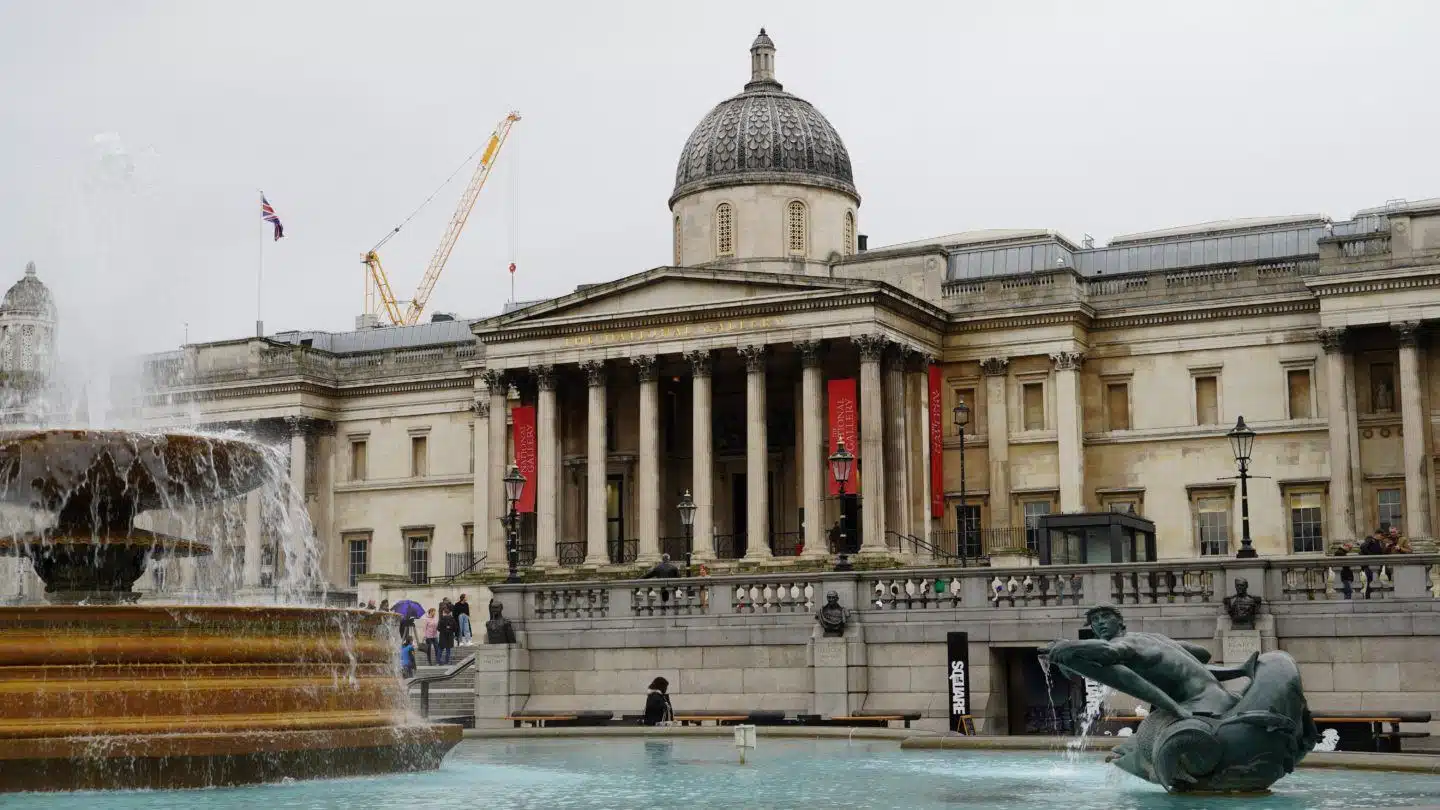
Trafalgar Square
Open 24/7, Trafalgar Square is, like, the ultimate London meeting place. With some of the biggest attractions in the city nearby, you can expect to see people hanging out on the steps and snapping photos, with gatherings and events happening throughout the year.
Located in central London—Westminster, to be exact—the square is circled by lots of iconic neo-classical architecture. There’s the National Gallery in the north, the Strand and St Martin-in-the-Fields Church in the east, Whitehall to the south, and the Mall and Admiralty Arch in the southwest.
Yep—there’s a lot going on!
Crazily, it’s actually been a significant spot in the British capital since the 13th century. The name, however, comes from Spain—the famous Battle of Trafalgar, in which Britain’s navy was victorious against Napoleon’s forces back in 1805.
Though they won, British forces lost their admiral—Lord Horatio Nelson. In honor, Nelson’s Column now sits proudly at the center of Trafalgar Square, with a statue of the man himself looking over the city.
The column is guarded by four impressive bronze lions; you’ve got to snap a selfie with these dudes!
There’s also the Trafalgar Square fountains—where you can spot dolphins and mermaids (not real, obvs)—which is illuminated at night.
Getting there: Charing Cross Station (Bakerloo and Northern lines); leave via the Trafalgar Square exit.
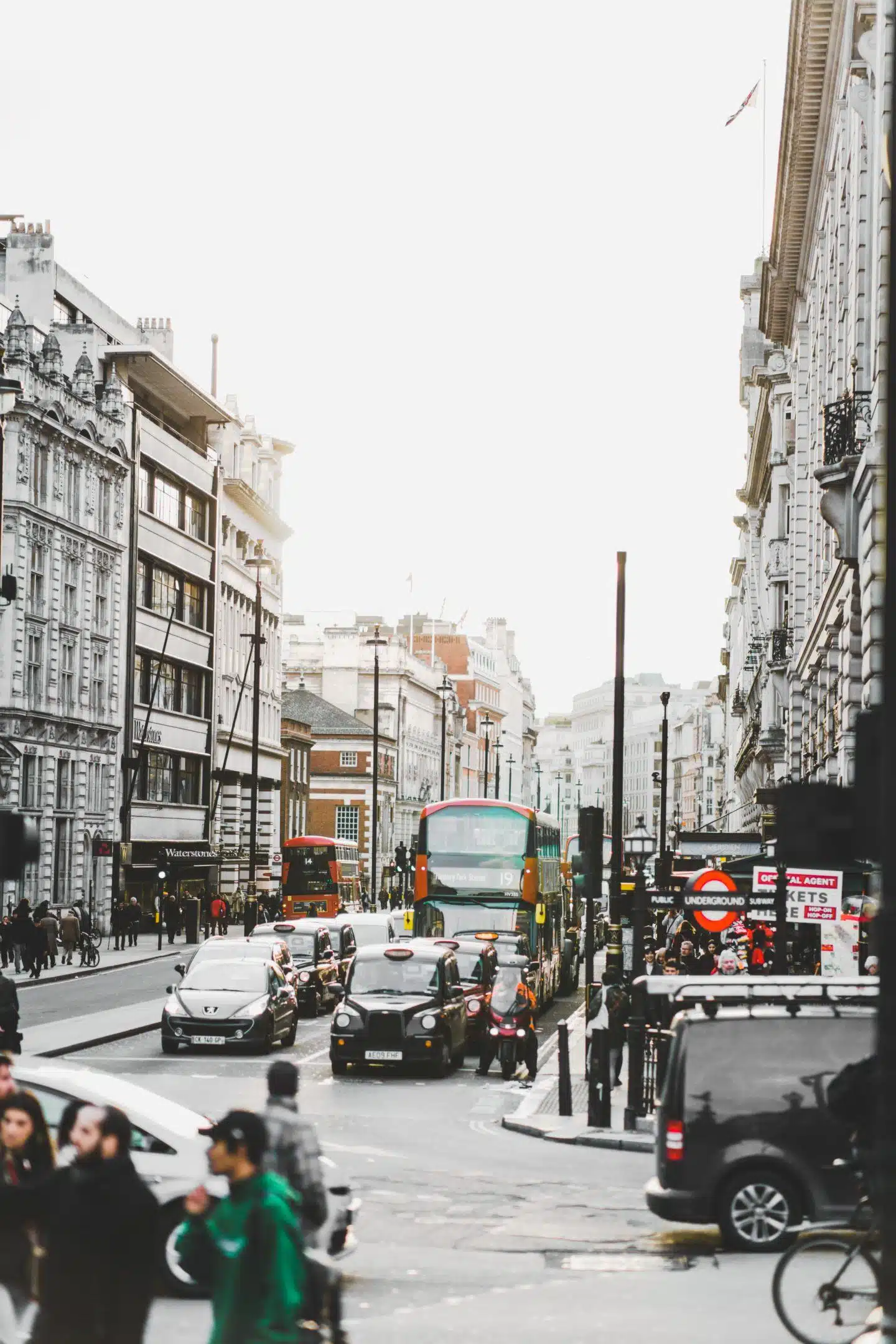
Leicester Square
First things first, loves; to avoid sounding like a total tourist when you’re in London, make sure you pronounce Leicester as “les-ter,” not “lie-ses-ter!”
Now we’ve got that out of the way, let me introduce this cool spot to you!
Leicester Square is a pedestrianized square in the entertainment hub that is London’s West End, basically like New York’s Broadway. If you are into movies, plays, and musicals, this is the place for you.
The area where London’s red carpet premiers take place (like the Chinese Theater in Hollywood), it’s also a tourist hotspot. One of the biggest reasons for this is the fact that Leicester Square is home to M&M’s World—it claims to be the largest candy store in all of Europe!
There’s also a HUGE Lego Store and big chain restaurants where you can get a load of home comforts and international eats. The park at the center of the square has fountains and statues, including one of William Shakespeare.
With Chinatown right on the doorstep, if you’re in London during Chinese New Year, you can expect the celebrations to spill over into Leicester Square, too!
Getting there: Leicester Square Station (Northern and Piccadilly lines). As a fun fact, this station opened in 1906—it’s a historic site in itself!
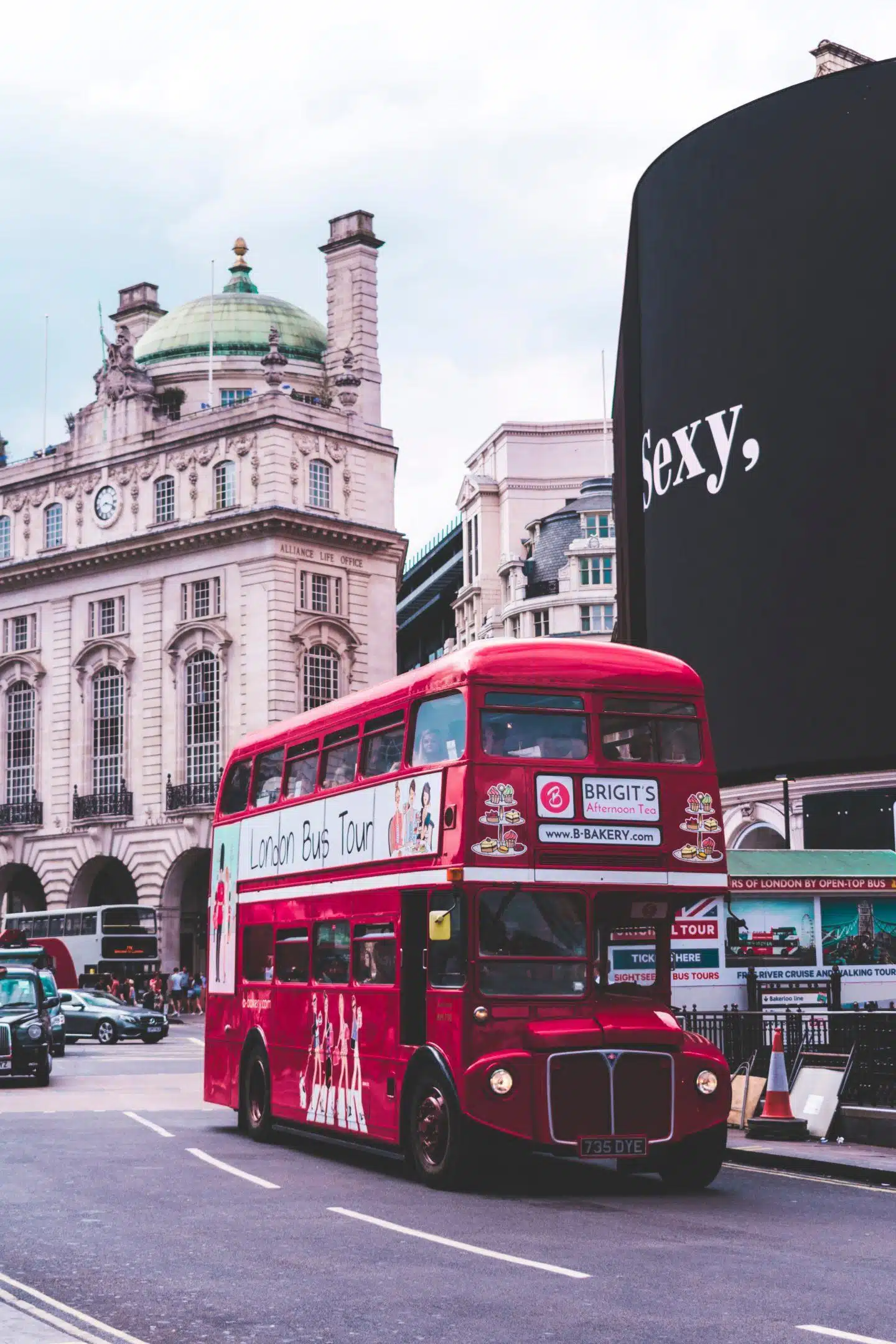
Piccadilly Circus
Built-in 1819, don’t come to Piccadilly Circus expecting clowns, magic tricks, and big-top acrobatics; the name comes from the Latin word for “circle,” and it’s basically a big, but pretty junction in the middle of London.
With its illuminated signs and advertisements, Piccadilly Circus today is like a mini version of Times Square in New York. It’s cute!
It’s also a super popular spot for tourists, who come to snap pics of the iconic buildings and lit-up screens.
It’s also famous for its fountain, in the middle of which sits a well-known statue, mistakenly thought (even by Londoners themselves) to be Eros—the Greek god of love. In fact, it’s actually Anteros, a Greek god of requited love. There’s a difference apparently!
You can often find people sitting on the steps of the fountain enjoying a snack, people-watching, and soaking up the atmosphere.
Upscale shopping lines Regent Street—including world-famous toy store Hamleys and Japanese department store Mitsukoshi—that leads off from Piccadilly Circus towards Hyde Park, Soho, and Oxford Street.
Getting there: Piccadilly Circus (Piccadilly and Bakerloo lines)
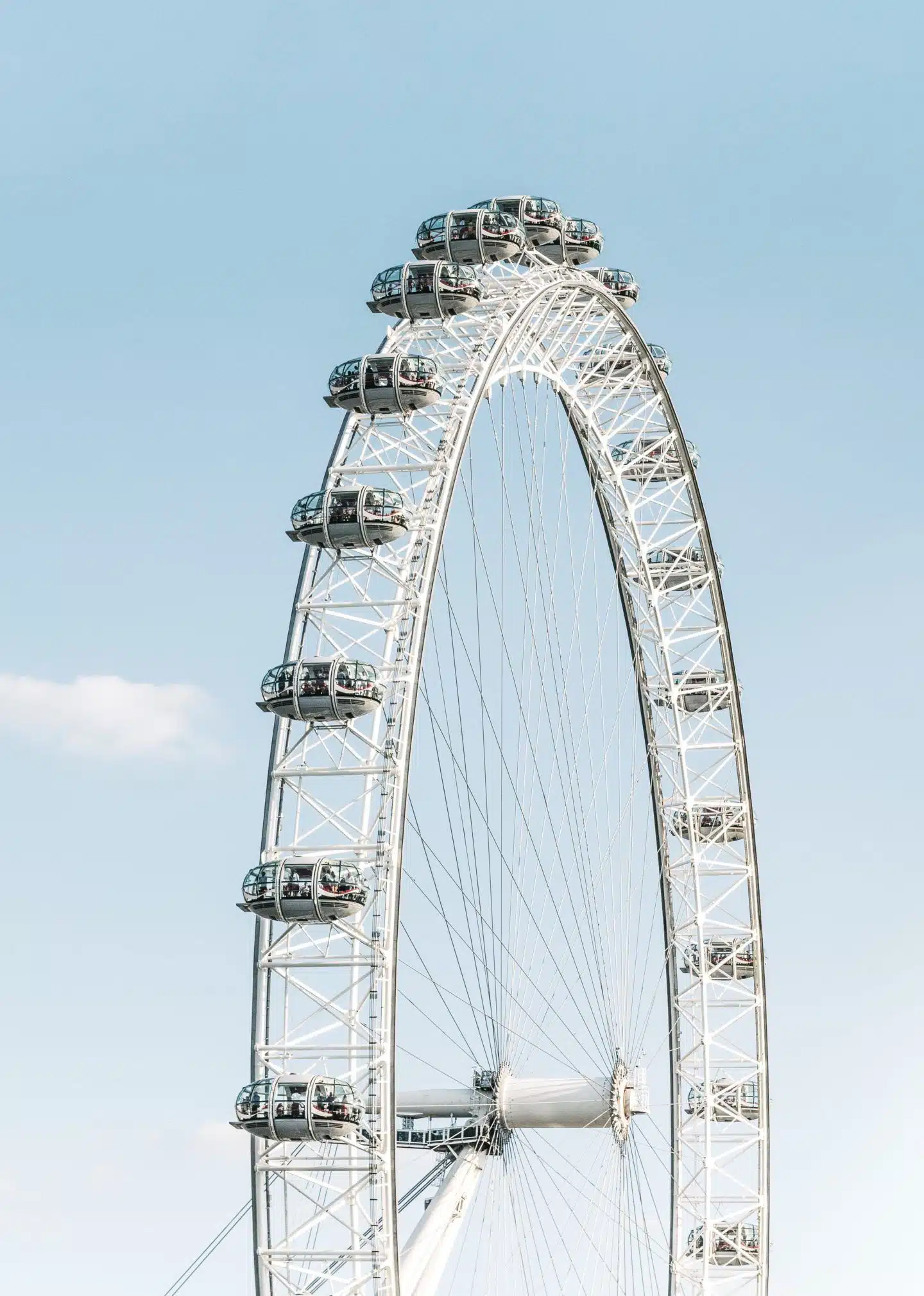
London Eye
The London Eye—or the Millennium Wheel, as it’s also called—is a popular spot to get a bird’s eye view of London. It’s a modern icon of the city.
Originally opened in 1999 for the Millennium, it was—at the time—the world’s tallest Ferris wheel (over 120 meters tall). It was also the highest public viewpoint in London, but the Shard has taken that distinction now.
It was only supposed to be in place for five years, but it still stands to this day, and tens of millions have ridden in one of its capsules.
Fun fact: There’s no number 13 capsule; it’s unlucky!
Once you’re inside the pod, you are free to wander around and get the best photos of the London skyline through the glass. It rotates around at the speed of just over half a mile per hour and takes half an hour to make one full circle, so you’ll have plenty of time to soak it all up!
A good idea is to book tickets in advance so you can skip the line since it can take a while to get on. But if you just want to see the wheel itself instead of riding it, I recommend seeing it from the north bank of the River Thames—and go at night to see it lit-up.
Getting there: Waterloo Station (exit following signs for South Bank, 5-minute walk), Charing Cross Station or Embankment (Circle, District, Northern, and Bakerloo lines), both are on the north side of the Thames and require you to cross the Hungerford Bridge.
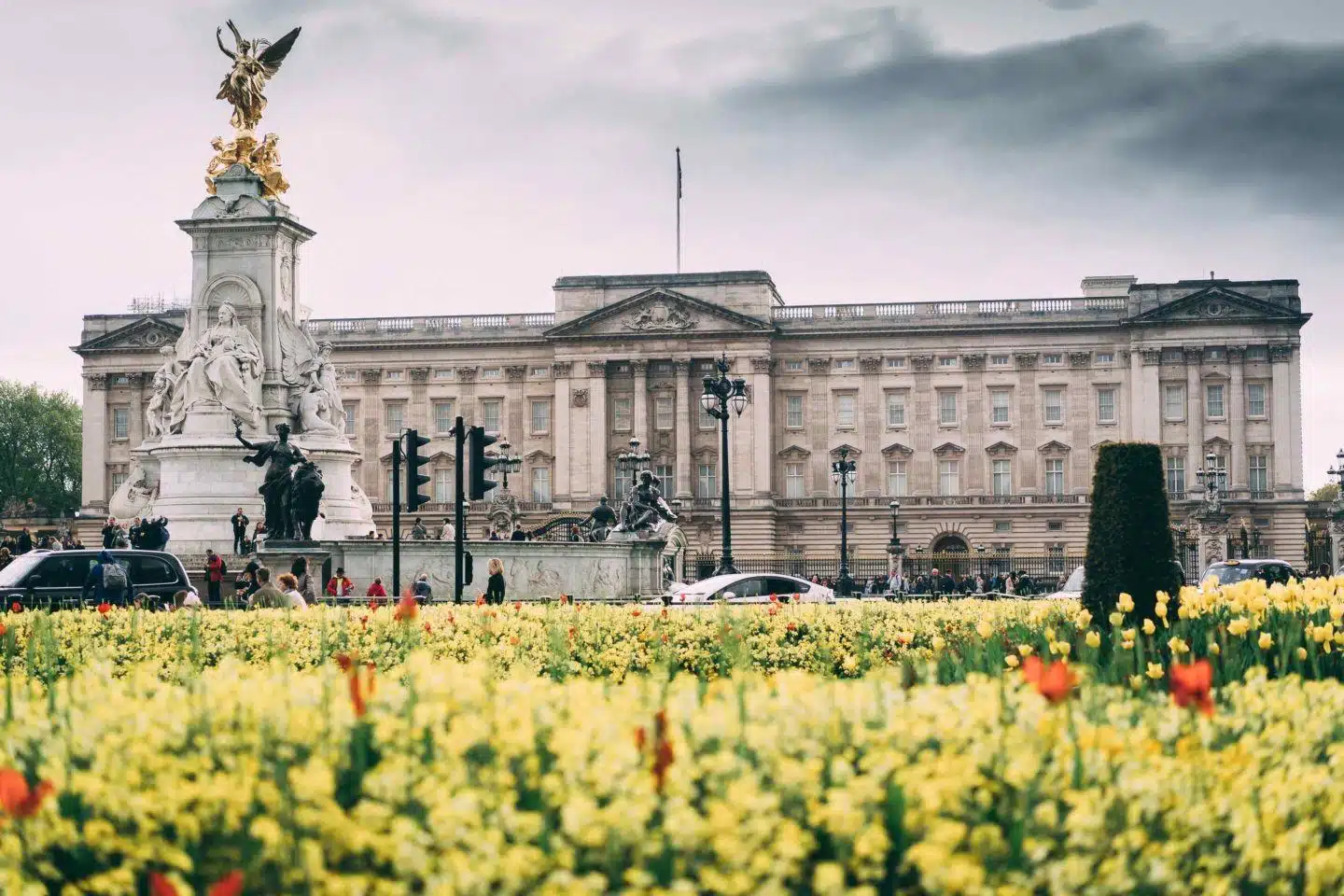
Buckingham Palace
One of the TOP destinations in London, especially for fans of the British Royal Family, Buckingham Palace is the official residence of the Queen and the Royal Family.
If you’re only in London for a day, Buckingham Palace is definitely a must!
Located in Westminster and originally a townhouse, the palace underwent a grand conversion into the super impressive and ornate building it is today by 1850.
Inside, there are 775 rooms, including 78 bathrooms, its very own post office, a doctor’s surgery, a jewelers workshop, a swimming pool, and a cinema. There’s room for just about everything!
Book a tour to peek inside for yourself! (Only available in summer.)
Although you can’t always go inside Buckingham Palace, what you should go and see is the changing of the guard at the forecourt. It happens daily from April to July, and every other day at other times of the year.
Fun fact: You can tell the Queen is at home if the flag is raised!
This ceremonial tradition is something that really shows you the history and importance of the Royal Family in the UK.
There’s more guard-changing action at the Horse Guards nearby. Horse Guards is a historic building that, though still in military use, is the site of the Household Cavalry Museum.
Getting there: A number of different underground stations are nearby, including Hyde Park Corner, Victoria, Green Park, and St James’s Park. Take your pick!
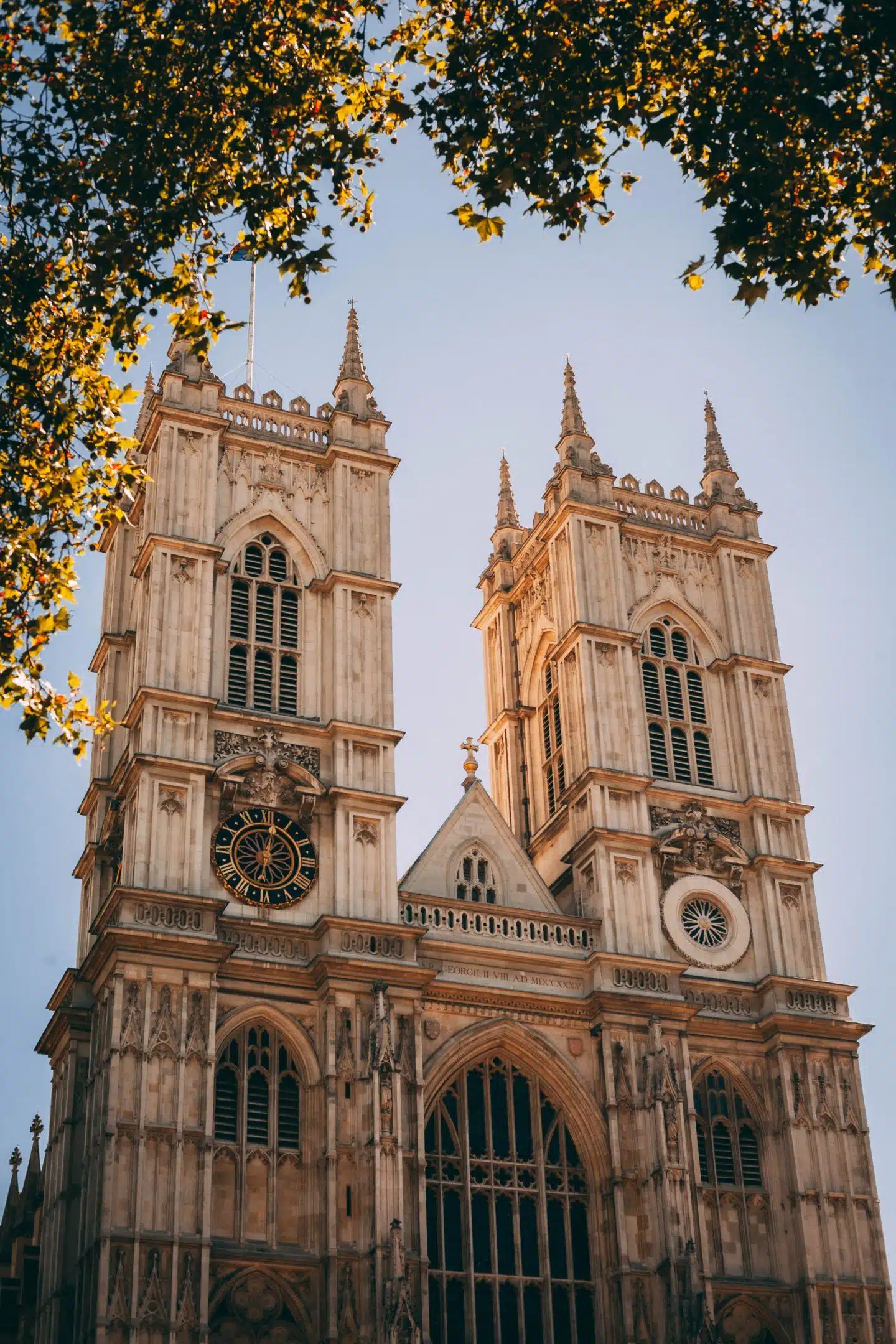
Westminster Abbey
Westminster Abbey is another one of London’s iconic buildings and it’s impressive, to say the least!
Over 700 years old, gothic-style Westminster Abbey is a special place to visit in London.
It’s actually been the site for coronations of British monarchs ever since William the Conquerer in 1066 AD!! That’s crazy!
It’s a burial site for the Unknown Warrior, alongside poet laureates, prime ministers, actors, and scientists, to name just a few.
This UNESCO World Heritage Site is a must-see building. You don’t just have to snap pictures of it from outside—you can go inside, too.
And that’s a good thing because Westminster Abbey is absolutely breathtaking on the inside! Book on a tour or go with an audio guide to learn all about the history and why it’s so important.
Getting there: Westminster Station (Jubilee, District, and Circle lines) or St James’s Park (District and Circle lines).
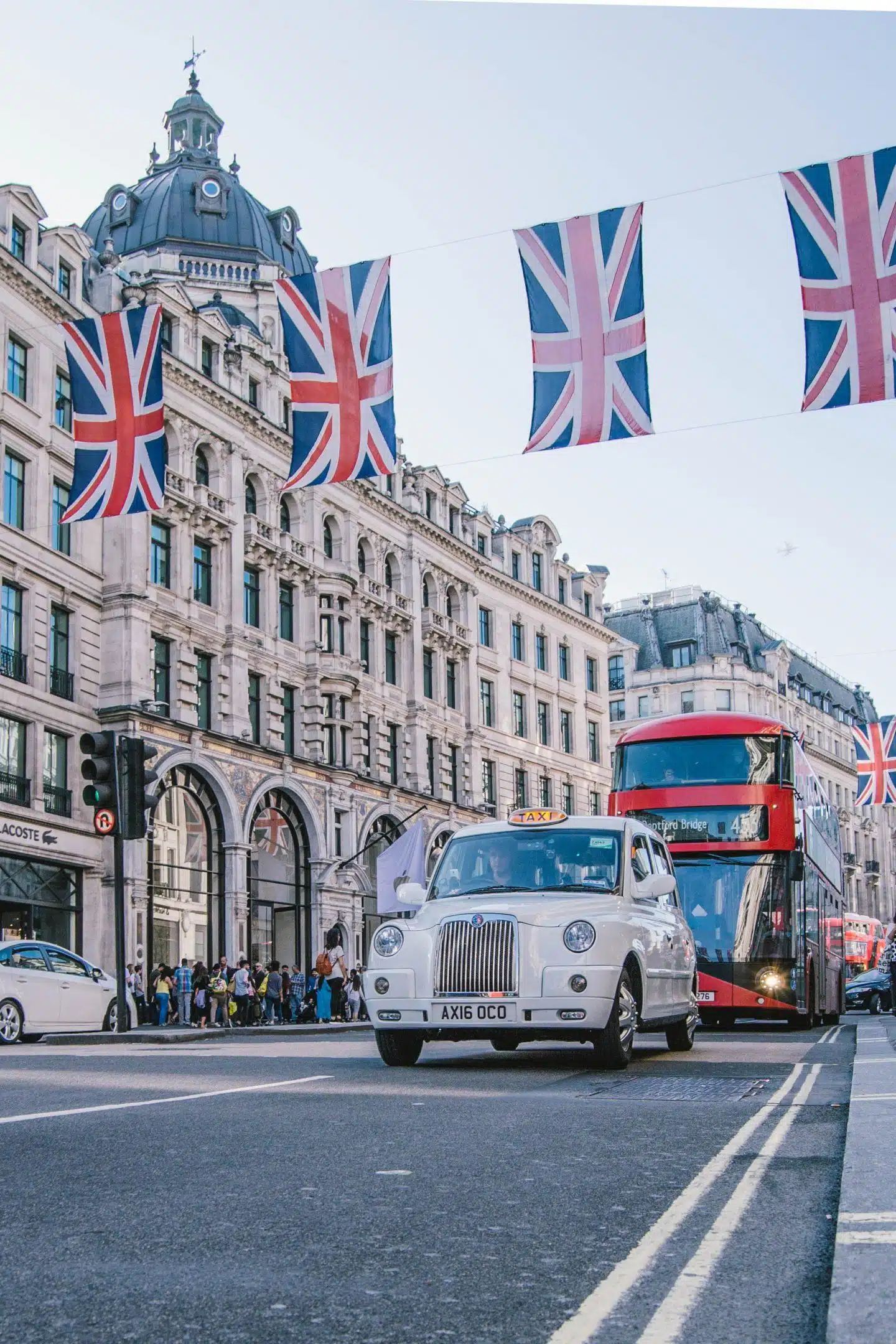
Oxford Street
If you are at all into shopping, then you should really make a beeline for Oxford Street!
This bustling retail district in Westminster is the busiest shopping street in Europe, attracting around half a million people every single day!
There are about 300 stores here—from Selfridges and John Lewis to Topshop’s flagship store. It’s a super popular spot, and you’ll be in luck if you’re here in the holiday season; the Christmas lights are magical. Add to the scene London’s red buses and black cabs, with Londoners rushing to work or shopping, and you’ll be completely charmed.
Nearby, you can slip down into Soho and enjoy a bit more of an offbeat shopping (and dining) experience.
Originally a Roman road, Oxford Street was actually mentioned by famous novelist Charles Dickens in A Tale of Two Cities. A trip here isn’t just a shopping experience; it’s worlds away from your run of the mill retail vibe!
Getting there: Oxford Circus Station (Central, Bakerloo, and Victoria lines) to be in the heart of it all, Tottenham Court Road Station (Central and Northern lines) serves the eastern end, and get off at Marble Arch (Central line) for the west—it’s a long street!
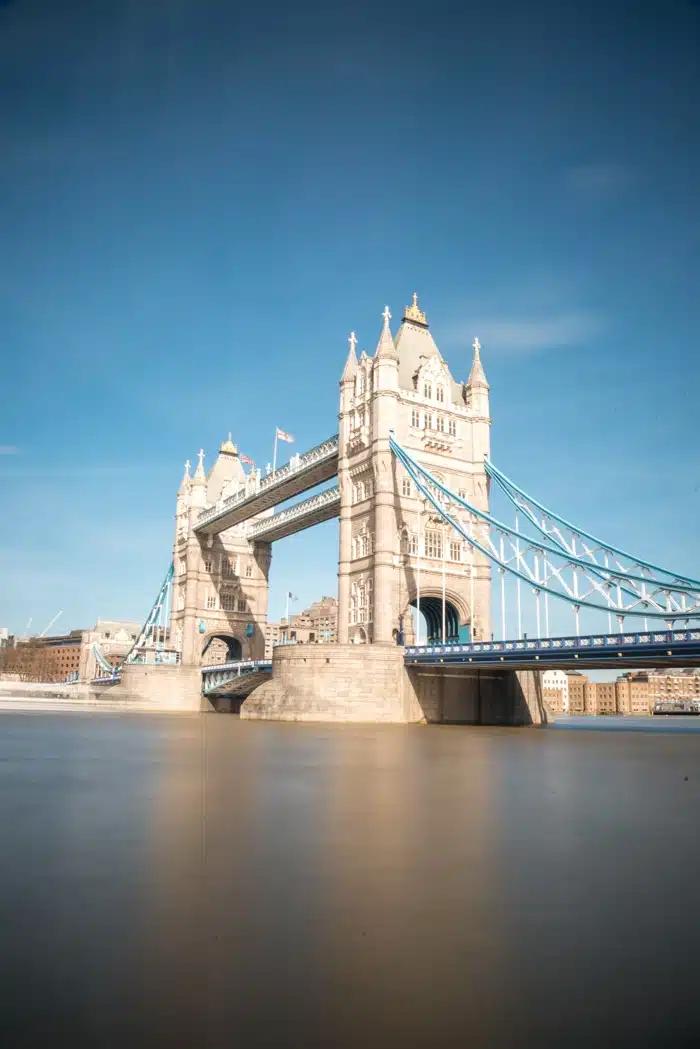
Tower Bridge
You’d be mistaken if you thought Tower Bridge was London Bridge. Tower Bridge is the one you’re thinking of, with its neo-gothic towers and steel structure.
(FYI London Bridge is half a mile upstream from here!)
It’s such a cool bridge! It’s an icon of London!
This Victorian structure was built between 1886 and 1894. You have to go and see it. If you’re lucky, you’ll see it in action, as the drawbridge goes up to let boats pass through.
One of my favorite things is a night drive (ideally in a black cab) across Tower Bridge when you’ll see the lights of the city as you cross.
Not everybody knows this, but you can actually go up the towers of Tower Bridge! You get to see the original (steam!) engines that powered the drawbridge and walk across both towers via a high-level walkway. It’s awesome!
The high-level walkway (42 meters above the River Thames below) provides you with views of St Paul’s Cathedral and St Catherine’s Docks, as well as the Tower of London.
Getting there: Tower Hill Station (District and Circle lines) or, ironically, London Bridge Station (Northern and Jubilee lines) on the South Bank.
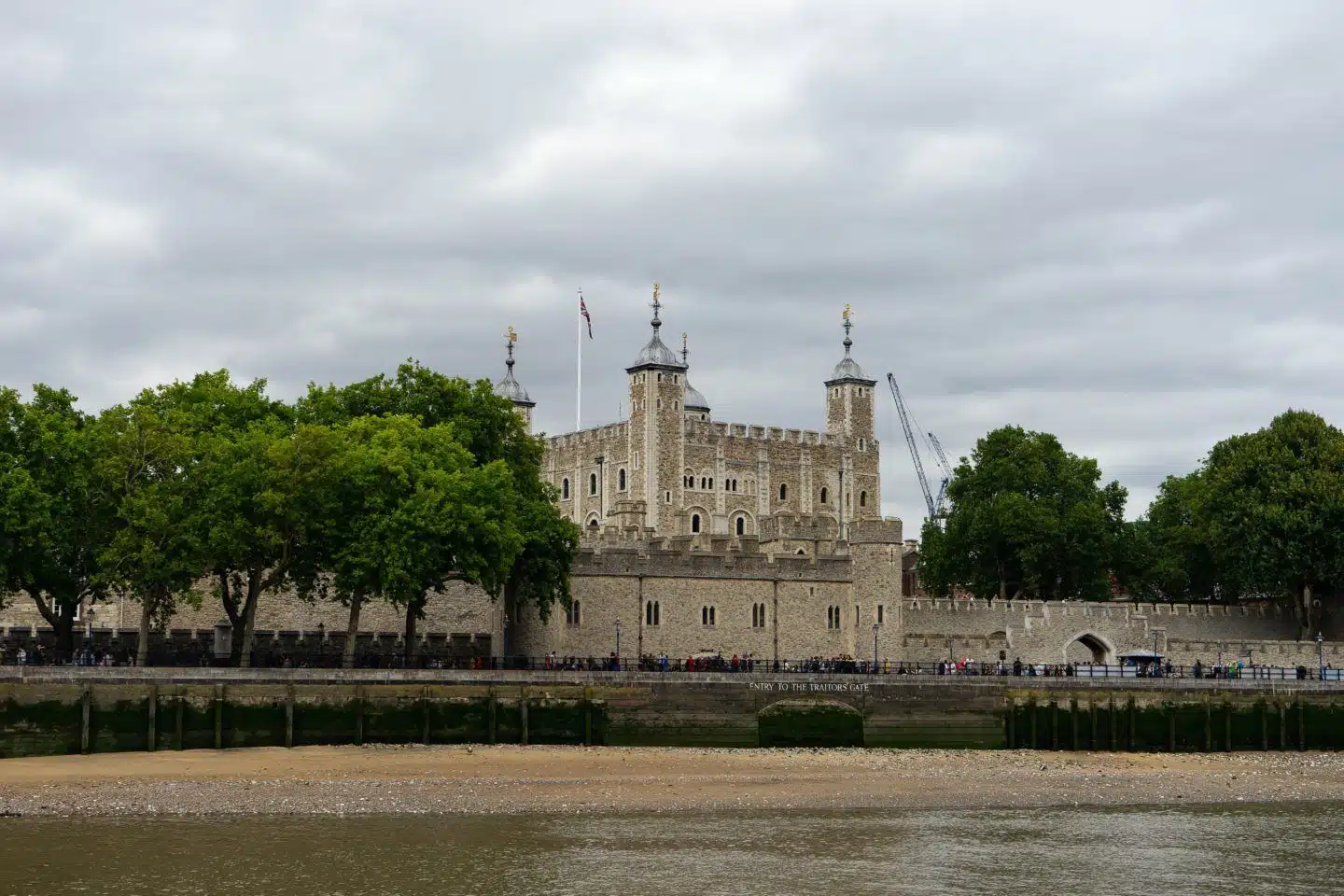
Tower of London
Just north of Tower Bridge is the historic Tower of London. Actually not a tower and more of a castle, this ancient site was founded way back in 1066!
It’s the “White Tower,” built-in 1078, that gives this landmark its name.
But just what is the Tower of London? A castle? A museum? It was, in fact, a prison. And it was a prison for a LONG time—from 1100 AD to 1952! That’s almost 1,000 years!
Today, it’s more than just a prison: it’s a prominent building in English history, home now to the Crown Jewels of England, which you can see on display here.
There’s basically so much history going on here, I can’t even. It’s impossible to fit it all in.
With everything from ghost stories to its famous modern-day living inhabitants (guards that are weirdly named “beefeaters”) as well as the scary ravens—there’s a lot to find out about this place. Go!
Both the Tower of London and the Tower Bridge are included on this list of the best things to do near St Paul’s Cathedral, so they’re worth checking out!
Getting there: Tower Hill Station (District and Circle lines); then a 5-minute walk.
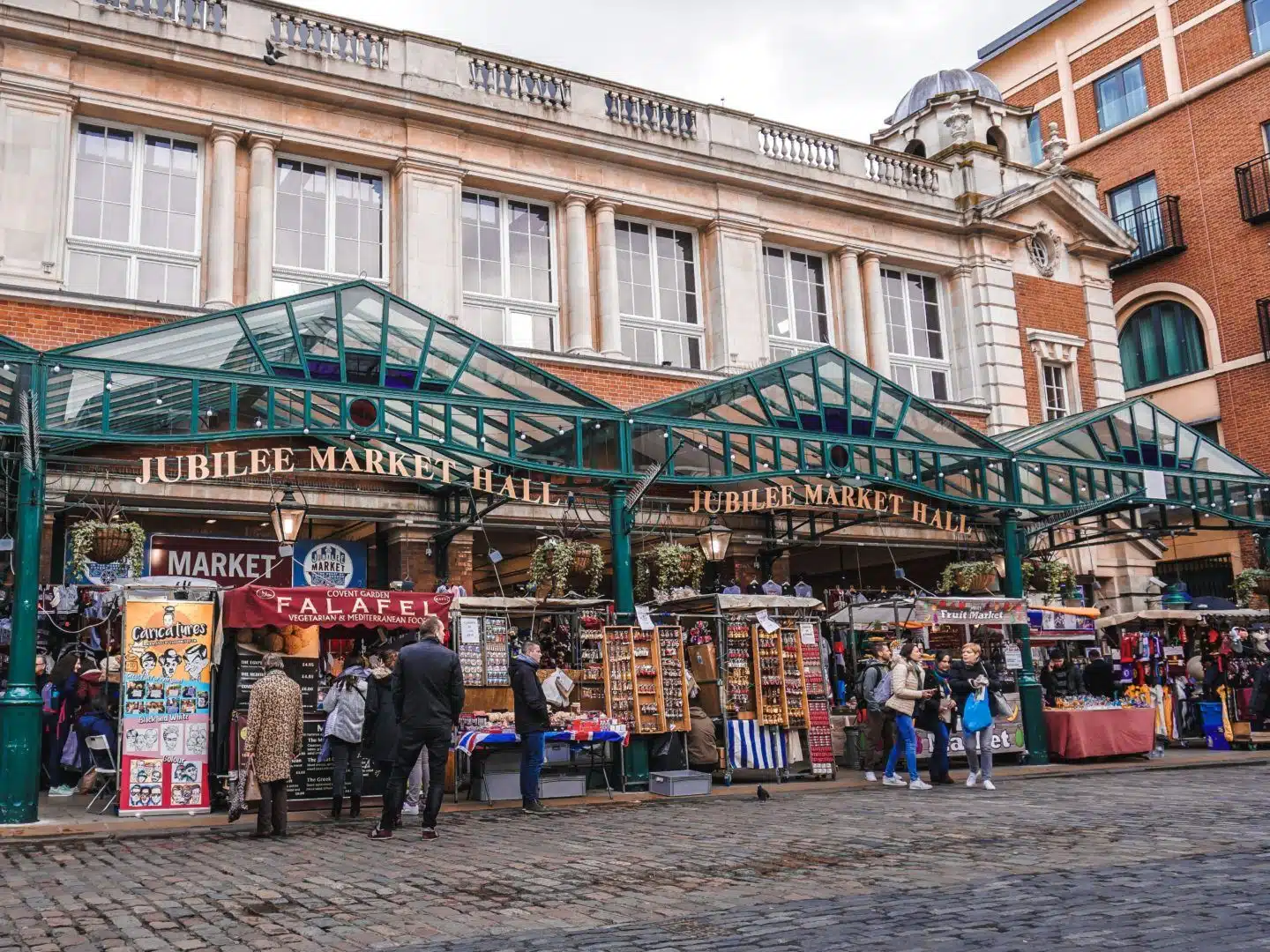
Covent Garden
If you ask me, this has got to be one of my favorite parts of London.
Covent Garden is another of London’s bustling West End destinations. What was once an old fruit and vegetable market is now a high-end district for eating, drinking, and shopping. Sounds great to me!
This is also where you’ll find the Royal Opera House (if you’re into ballet and classical music), as well as a bunch of independent shops. It’s also the home of Neal’s Yard, famous for its apothecary, dairy products, and cute setting. It’s a perfect Insta spot.
Basically, here is where you’ll see people sitting out enjoying the atmosphere, with buskers and magicians often making an appearance.
There are over 60 bars and pubs to sample in Covent Garden! To be honest, you could spend a whole day here if you felt like it!
The market in the middle is now where you can buy all sorts of cute stuff—from arts and crafts to handmade soaps and jewelry. There’s an antique fair held here sometimes, too!
For history, head to the London Transport Museum for the chance to step on an old train and learn about the story of public transport in London. A top tip is to use this opportunity to pick up a vintage London Underground poster!
There are some great hotels around Covent Garden, with high-end staples like Radisson as well as the uber-luxe Phillipppe Starck-designed St Martins Lane Hotel.
Getting there: Covent Garden Station (Piccadilly line, between Leicester Square and Holborn). It’s a breeze! Fun fact: the distance between Covent Garden and Leicester Square tube stations is one of the shortest on the whole Underground—so save money and walk these two stops!
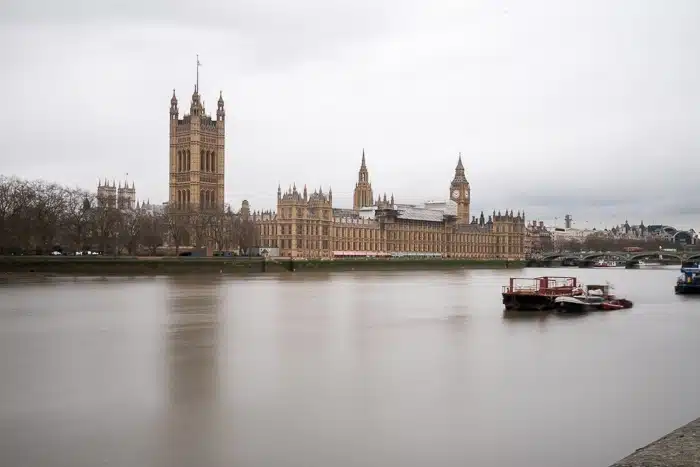
South Bank
South Bank is a great place to hang out. Especially as the day comes to an end, Londoners head here to meet friends for dinner and drinks.
It’s a popular spot, and if you come here on a sunny summer evening, you’ll see why! The pubs and al fresco dining spots along South Bank are practically overflowing.
But it’s not all about the evening entertainment. There’s a lot going for this area, which runs for two square miles along the south bank (duh) of the River Thames.
There’s the BFI South Bank: a cinema space that shows cult classics throughout the year.
There’s also the Tate Modern: a super hip modern art gallery set in a former power station. It’s a must-see for any art enthusiast. As a major plus, the permanent collection is free to enter.
More art can be found at the Hayward Gallery, another nice contemporary art center.
You’ll also find the London Eye here, obviously, but for something a little more off the beaten track, head to Leake Street for street art and graffiti galore. It’s a great spot for your edgy London photoshoot!
For something a little more elegant, you could always go for cocktails atop the iconic OXO Tower.
As you can tell, South Bank is an interesting area that you could spend more than a day exploring. Even Londoners keep discovering new spots here!
Don’t forget: Snap a picture of the city skyline at sunset.
Getting there: From west to east: Westminster (Circle, District, and Jubilee lines), Waterloo (Bakerloo, Waterloo and City, Jubilee and Northern lines), Embankment (Northern, Bakerloo, Circle, and District lines) and Southwark (Jubilee line) are all good stops for South Bank.
Downing Street
Number 10 Downing Street is the home of the British Prime Minister!
Sadly, there’s no way you’ll be getting in to have a look around—unless you’ve got some sort of special appointment! There are no tours of 10 Downing Street.
You can, however, peer through the gate to see the famous door with its golden “10” etched on the front.
When you’re there, you’ll notice the London Metropolitan Police officers guarding the gate and see crowds gathered outside—especially if the Prime Minister is going to make a speech or something.
Fun fact: 10 Downing Street has been the home of British Prime Minsters for over 300 years.
Though you can’t snap a photo of the door at one of the most famous addresses in England, there is an amazing hack to get a snap of the eminent door.
Within walking distance (800 meters) is Adams Street. A public street without any security, 10 Adams Street—being of a similar style and age—looks pretty much the same as 10 Downing Street. Snap a photo here and nobody will know the difference!
Getting there: Westminster Station (District, Circle, and Jubilee lines), then eight minutes walking; Charing Cross (Northern and Bakerloo line) then ten minutes on foot.
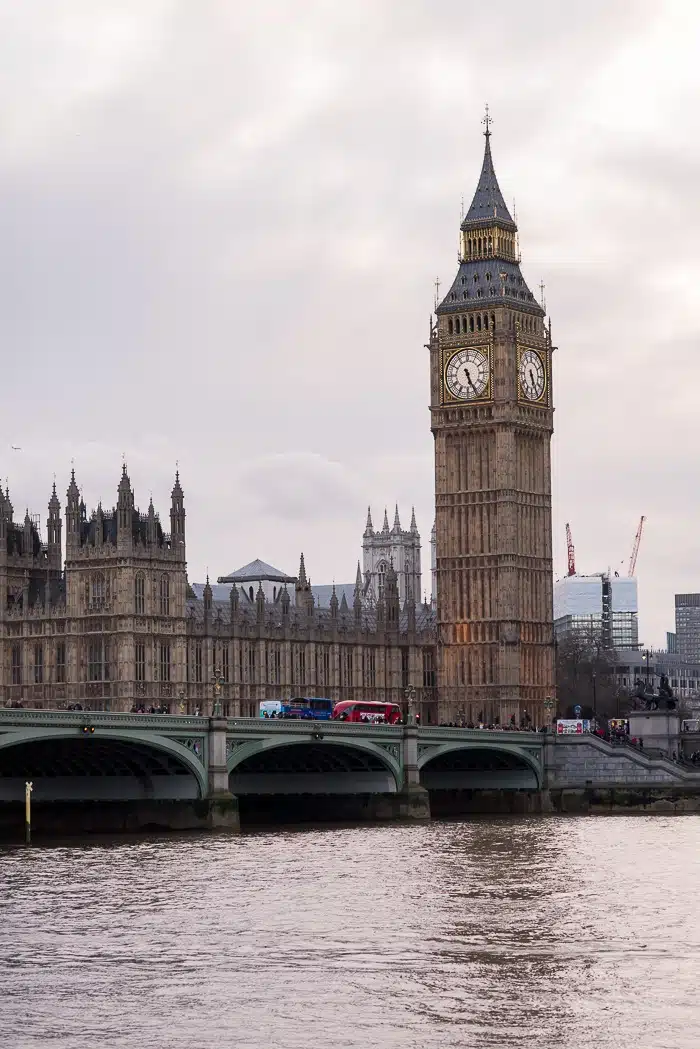
Big Ben and the Houses of Parliament
Just across the road from Downing Street is the home of British politics: the Houses of Parliament! And the ornate clock tower is known as Big Ben, of course.
It’s a little-known fact that the Houses of Parliament is actually a palace; Westminster Palace (owned by the Queen!), to be exact. It’s here that Britain’s parliament meets to debate and set laws.
Located on the North Bank of the River Thames, it’s an easy stroll to here from Number 10 Downing Street—a short commute for the Prime Minister!
Unlike Downing Street, you can actually go into the Houses of Parliament on a guided tour. This happens on the weekends when Parliament is not in session. You’ll get to explore some famous rooms and learn about the history of the building.
But more famous than the Parliament buildings is Big Ben.
This world-famous clock tower is officially known as Elizabeth Tower. Big Ben actually refers to the bells that sound the famous tune every hour. Perfect for an Insta story.
For the best view, head to Westminster Bridge. This is where you’ll have the opportunity to snap Big Ben with a red bus in front of it—you can’t get more London than that!
Visiting here is easily one of the best free things to do in London.
Nearby is the Churchill War Rooms, which are a hidden bunker between Whitehall and Westminster. This is the place where Winston Churchill took shelter and made decisions about Britain’s WWII efforts!
Getting there: Westminster Station (Jubilee, District, and Circle lines)—it’s right across the street! Another option is a river bus, which will dock nearby at Westminster Pier.
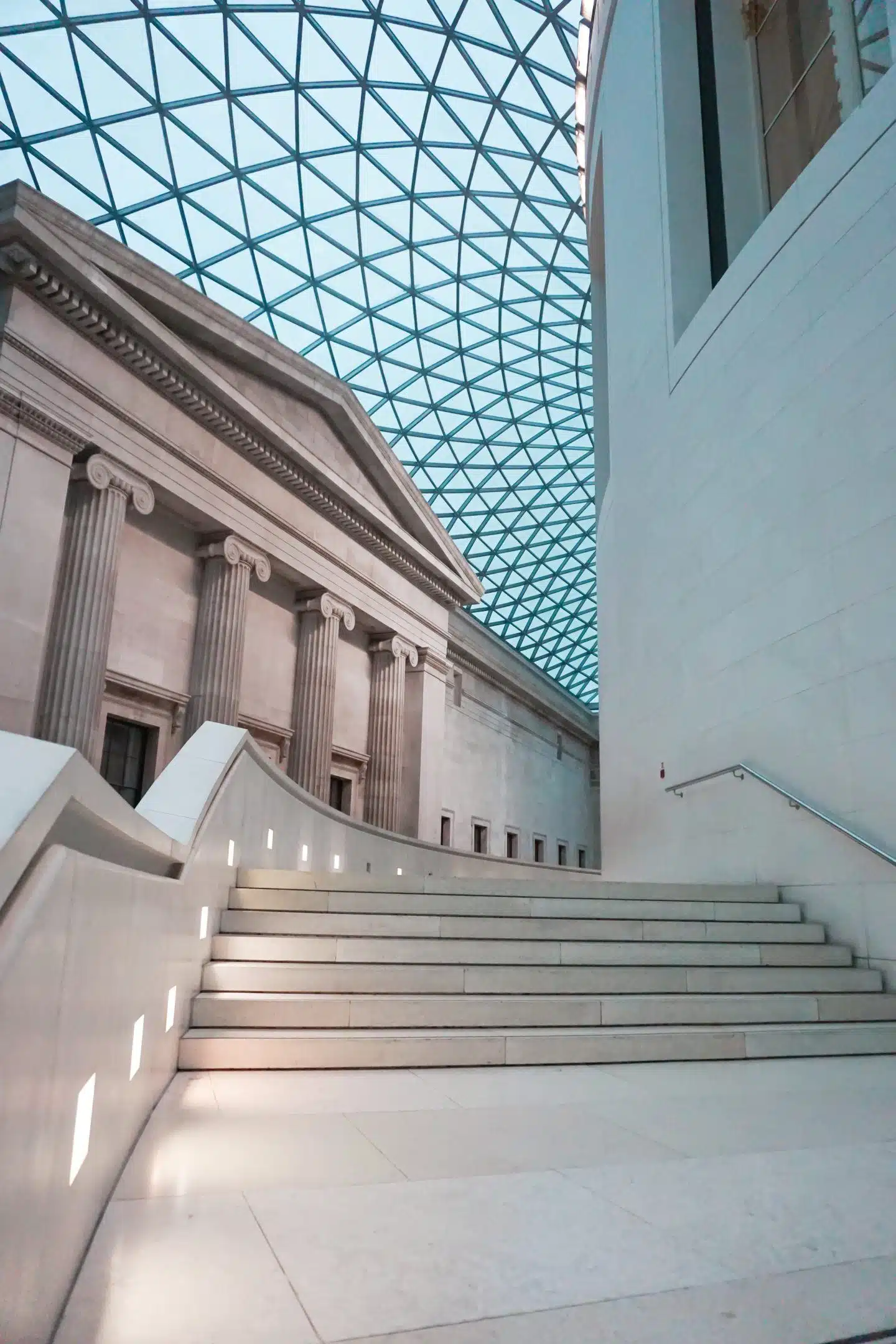
British Museum
Set in Bloomsbury, the British Museum has a HUGE collection of pieces related to art and culture. In fact, it’s one of the largest collections in the world.
It’s also the first-ever public national museum in the world, dating back to 1753.
The building is super impressive too, with a Greek Revival exterior and a modern interior.
A trip here means you can see Ancient Egyptian mummies from 400 BC, marble statues from Ancient Rome, and a whole load of other historical artifacts. There are many special exhibitions throughout the year, too.
And the best things? All of this is FREE, which is awesome!
Getting there: Tottenham Court Road (Northern and Central line), Russell Square (Piccadilly Line) and Holborn (Central line) are all nearby.
Off the beaten track things to do in London
If you have a little more time to spare, or if you want some more local experiences in the British capital, here are a few extra options to fit into your London itinerary.
East London
The markets, parks, and general hipster vibe of East London is definitely something that deserves some time. There more than a few cool spots in this general area that you may want to hit up.
Brick Lane, for example, is great for two things—Indian cuisine and street art. There’s an amazing food scene here and around the area.
Columbia Road Flower Market in Bethnal Green is another place to visit, and it happens every Sunday morning. It’s super busy, but when it’s nice weather, it’s such a cool vibe.
Really like markets? Then there are also Broadway Market and Spitalfields Market, both with trendy eating and drinking options.
For some green space action, there’s Victoria Park.
Shoreditch is a very cool area. Box Park is one spot here that you should hit up for food and boutique goods.
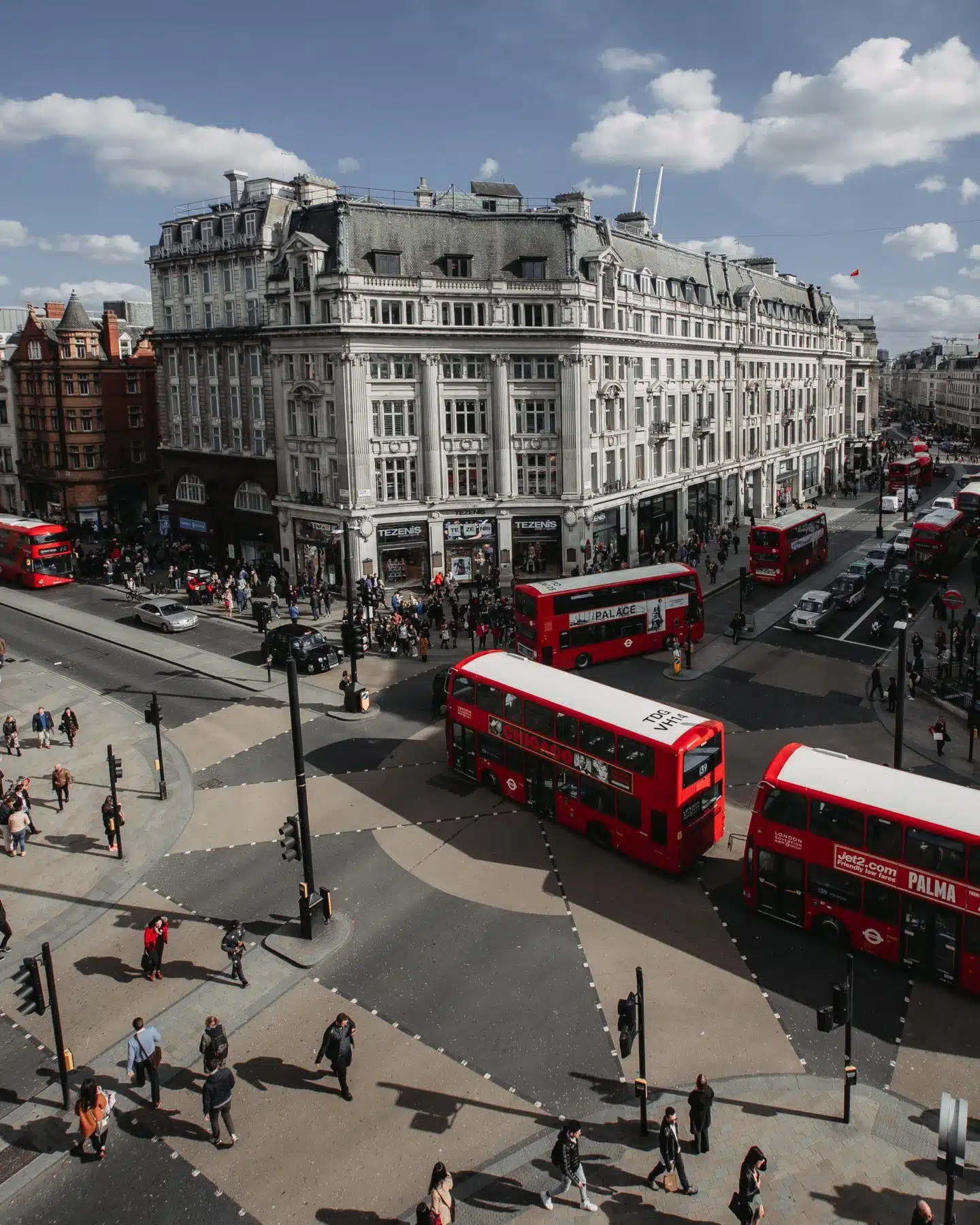
Soho
Just off the mainstream tourist thoroughfares of Oxford Street, Regent Street, and Piccadilly Circus, you’ll find Soho. New York may have SoHo, Hong Kong has a Soho too, but London’s is the original Soho!
It’s a tiny place really—just one square mile—but this LGBT-friendly area (the hub of Pride) was formerly a red-light district and is now home to some very cool places.
Colorful storefronts, a ton of restaurants, an amazing selection of London pubs, and even a few music venues and clubs make Soho, like, the place to be.
It’s historic too: Karl Marx once lived in Dean Street, while even Mozart himself took up residence in Frith Street. Soho is awesome.
Being near to Chinatown, there’s a spilling over of Asian influences in Soho. Eateries—from Japanese and Vietnamese to some traditional Italian and Greek cuisine—can be found here.
Carnaby Street—now this, you may have heard of. A key component in London’s “Swinging ’60s” scene, this was THE place to head for the hippest clothes at the time. It’s still pretty cool today, and at one end, you’ll find Liberty, a famous department store.
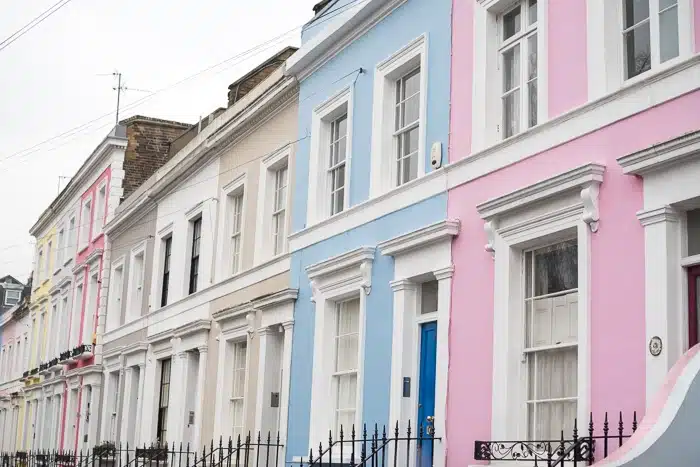
Notting Hill
Famous for more than just the movie, Notting Hill is a charming area that will—let’s face it—make you want to actually live in London.
Filled to bursting with cosmopolitan cool, Notting Hill is one of my favorite spots in London. There are pastel-colored houses to walk past and admire, boutique stores to explore, cool coffee shops to visit, and a very famous market in the form of Portobello Road Market.
Portobello Road Market is actually one of the largest antique markets in the world. With over a thousand sellers, it attracts people from all corners to pick up a deal.
On other days, Portobello Road becomes a fashion market, food market, or fruit and vegetable market. It’s an exciting street that’s always got something going on.
Notting Hill is also home to an absolutely awesome festival, the Notting Hill Carnival.
If you’re in London in late August and you like to party, this is the place you should be heading. Notting Hill Carnival is an exciting splash of Caribbean culture in London—expect floats playing everything from dub to dancehall, packed streets, Caribbean street food, and plenty of drinks. Go prepared!
Away from this colorful festival, if you are interested in visiting Notting Hill because of the movie, then you’ll be glad to know that there is a Notting Hill Film Tour. This will whisk you around all the scenes that feature in the film—and you’ll get to learn a bit of history about the area as well.
Notting Hill is yet another one of those surprising areas of colliding culture that make up the vital patchwork of London.
So, there you have it guys. That was my epic London in a day itinerary all mapped out for you. I know it’s a lot, but you’ll just have to pick and choose what sounds the most interesting and fun to you and do what you can! Honestly, there’s so much more to see and do in London, but these are the highlights!
Whether you choose to stick to the main sights and snap photos of “classic” London, or if you find yourself in a more offbeat section of the city hanging out with the hipsters, there’s no doubt in my mind that you’re going to have an awesome time!
There’s something for just about everyone to enjoy in this cool city.
Don’t forget to tag me in your Insta stories and pics (I’m @wtfab, btw) and let me know all the awesome things you get up to—I definitely need some travel inspo right about now!
Be sure to check out my other London travel guides here.
Tea Time at The Berkeley
Sketch London
Top 18 Most Instagrammable Restaurants in London
38 Different Things to Do in London + Everywhere to Eat and Drink
Day Trips from London
15 Delicious Notting Hill Brunch Spots
FAQs
It is recommended to spend at least 3 – 4 days in London to see all the important sights without feeling rushed.
The cheapest months to travel to London is from April to May or early September to October.
London is overall a pretty safe city to explore as long as you are constantly aware of your surroundings and avoid areas that make you feel unsafe.

Elise Armitage is an entrepreneur and founder of What The Fab, a travel + lifestyle blog based in California. At the beginning of 2019, Elise left her corporate job at Google to chase her dreams: being an entrepreneur and helping women find fabulous in the everyday. Since then, she’s launched her SEO course Six-Figure SEO, where she teaches bloggers how to create a passive revenue stream from their website using SEO. Featured in publications like Forbes, Elle, HerMoney, and Real Simple, Elise is a firm believer that you can be of both substance and style.



